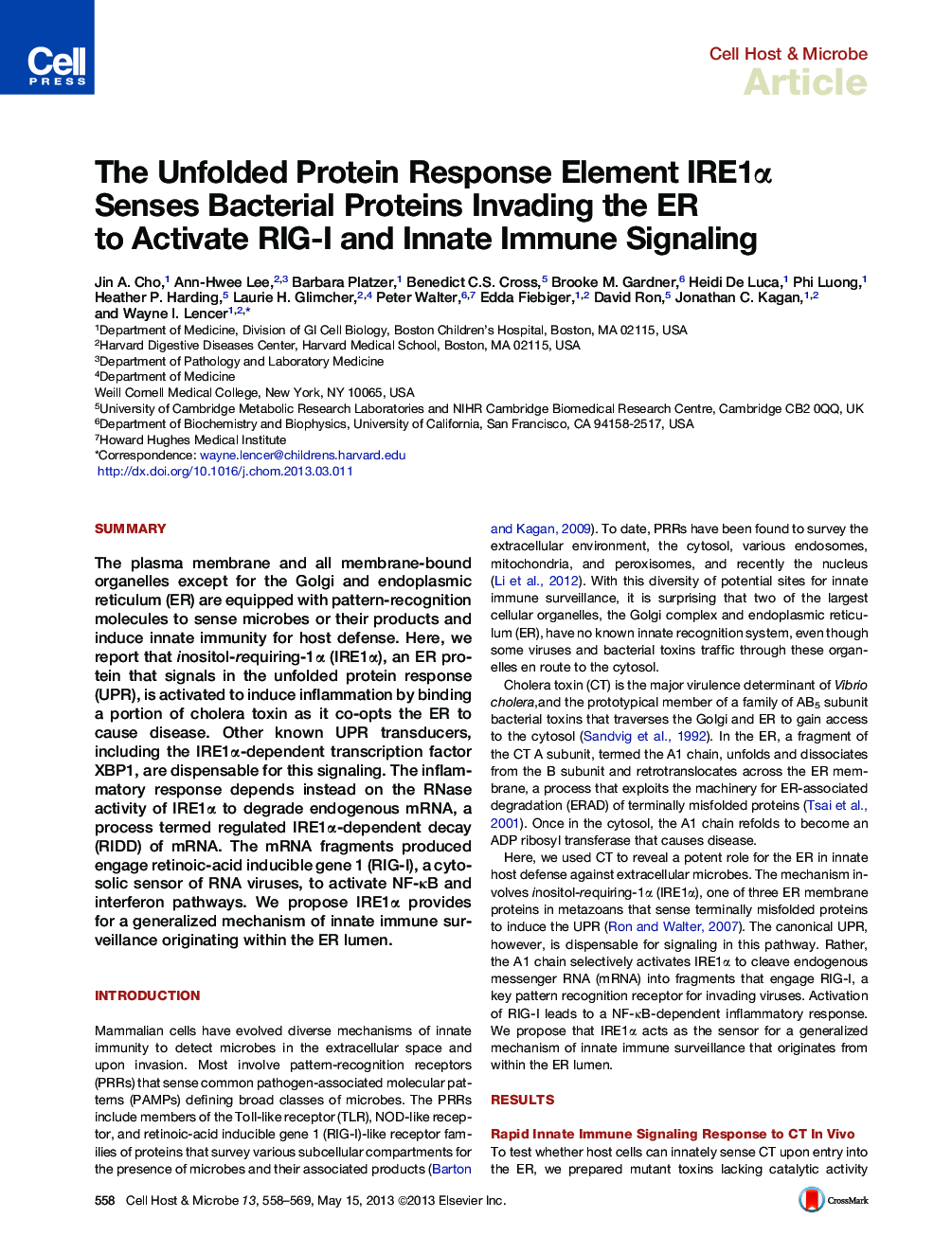| Article ID | Journal | Published Year | Pages | File Type |
|---|---|---|---|---|
| 4361237 | Cell Host & Microbe | 2013 | 12 Pages |
•Cholera toxin (CT) activates an innate immune signaling response in vivo•CT A chain is sensed upon ER entry and induces NF-κB-dependent inflammation•The CT A chain binds and activates the UPR component IRE1α, but not canonical UPR•Activated IRE1 produces small RNA fragments via RIDD which activates RIG-1 and NF-κB
SummaryThe plasma membrane and all membrane-bound organelles except for the Golgi and endoplasmic reticulum (ER) are equipped with pattern-recognition molecules to sense microbes or their products and induce innate immunity for host defense. Here, we report that inositol-requiring-1α (IRE1α), an ER protein that signals in the unfolded protein response (UPR), is activated to induce inflammation by binding a portion of cholera toxin as it co-opts the ER to cause disease. Other known UPR transducers, including the IRE1α-dependent transcription factor XBP1, are dispensable for this signaling. The inflammatory response depends instead on the RNase activity of IRE1α to degrade endogenous mRNA, a process termed regulated IRE1α-dependent decay (RIDD) of mRNA. The mRNA fragments produced engage retinoic-acid inducible gene 1 (RIG-I), a cytosolic sensor of RNA viruses, to activate NF-κB and interferon pathways. We propose IRE1α provides for a generalized mechanism of innate immune surveillance originating within the ER lumen.
Graphical AbstractFigure optionsDownload full-size imageDownload high-quality image (169 K)Download as PowerPoint slide
